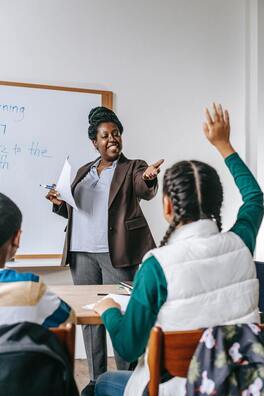Developing Cultural Competency as educators

Relationship-building is a central tenet of effective teaching and creates long-lasting implications for students who experience disadvantages within the existing education system. The teacher-student relationship has many subtle nuances across race, gender, ability, sexuality and class lines. Yet, over and over again, we see educators jump directly into teaching without understanding how intersectional experiences shape the identities of their students and, thus, their learning environments.
Educators who fail to acknowledge their own biases and assumptions directly hinder the development process of students. Good intentions are not sufficient and can still have detrimental ramifications; students will react and respond only to the educator’s actions
Schools must shift away from the notion of culture as a celebration or event. Instead, schools should view culture as experiences, knowledge, beliefs and values that affect the lives of everyone in the school building.
Educators who fail to acknowledge their own biases and assumptions directly hinder the development process of students. Good intentions are not sufficient and can still have detrimental ramifications; students will react and respond only to the educator’s actions
Schools must shift away from the notion of culture as a celebration or event. Instead, schools should view culture as experiences, knowledge, beliefs and values that affect the lives of everyone in the school building.
Familiarizing yourself with the terms below will help you respond more effectively to cultural diversity:
Cultural safety is a “dynamic and flexible process” that “relies on services establishing meaningful, accountable and equitable long-term relationships with communities built on an understanding of their cultures and worldviews as well as their unique needs and strengths” (Funston, 2013, pp. 3829–3830). Cultural safety means that educators do not make assumptions about culture, students are treated with compassion and respect, and power differences between teachers and students are minimized. Alternatively, culturally unsafe practices are “any actions that diminish, demean or disempower the cultural identity and well-being of an individual” (Ontario Native Women’s Association, 2011, p. 10). Cultural security and cultural responsiveness are related to cultural safety; however, both require that teachers are actively working towards meeting students’ cultural needs (Aboriginal an Torres Strait Islander Social Justice Commissioner, 2011; Australian Attorney General’s Department, Australian Institute of Social Relations, 2010).
Cultural proficiency is “the capacity to effectively communicate and interact with culturally diverse people, in a manner that is respectful and responsive to the cultural and linguistic needs of the population”. Cultural proficiency helps to break down institutional barriers that prevent people from accessing available services (Ríos, n.d., p. 35), (for example, incorporating diverse cultural elements into education delivery). Similarly, cultural sensitivity means that teachers make the effort to interact with each student on an individual basis, as opposed to making assumptions based on a student’s cultural background.
Cultural competency is “individuals and organizations having the values, skills, knowledge, attitudes, and attributes to work effectively in cross-cultural situations” (Whitaker et al., 2007, p. 192). Culturally competent teachers are responsive to students’ cultures (Bell & Mattis, 2000). The cultural competencies of both individuals and systems are interrelated as context influences competency (Pyles & Kim, 2006).
How do we develop an attitude and the components of cultural competence?
- Practice openness by demonstrating acceptance of differences.
- Be flexible by accepting ambiguity.
- Demonstrate humility through suspension of judgment and the ability to learn.
- Be sensitive to others by appreciating cultural differences.
- Show a spirit of adventure by being curious and seeing opportunities in various situations.
- Employ a sense of humour and be able to laugh at ourselves.
- Practice positive change or action by having a constructive interaction with a new or different culture.
Here are some great videos you can share with your class to spread knowledge of other cultures:
|
|
|
|
|
|
|
|
|
|
|
|
|
|
|
|
|
|
|
|
|
|
|
|
|
|
|
|
|
|
|
|
|
|
|
|
|
|
|
|
|
|
|
|
|
|
|
|
|
|
|
|
|
|
|
|
|
|
|
|
|
|
|
|

